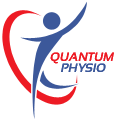[et_pb_section fb_built=”1″ admin_label=”section” _builder_version=”4.16″ global_colors_info=”{}” theme_builder_area=”post_content”][et_pb_row admin_label=”row” _builder_version=”4.16″ background_size=”initial” background_position=”top_left” background_repeat=”repeat” global_colors_info=”{}” theme_builder_area=”post_content” width=”81.4%” custom_margin=”|auto||174px||”][et_pb_column type=”4_4″ _builder_version=”4.16″ custom_padding=”|||” global_colors_info=”{}” custom_padding__hover=”|||” theme_builder_area=”post_content”][et_pb_text admin_label=”Text” _builder_version=”4.23.4″ background_size=”initial” background_position=”top_left” background_repeat=”repeat” custom_margin=”0px||||false|false” custom_padding=”0px||||false|false” global_colors_info=”{}” theme_builder_area=”post_content”]
Do you think Pilates could help me with my pain ?
The Health Risks of Prolonged Sitting
What Is the Role of Pilates Therapy and Physio Exercises in Rehabilitation?
[/et_pb_text][/et_pb_column][/et_pb_row][/et_pb_section]

Pingback: Managing Inflammation: Quantum Physiotherapy's Approach